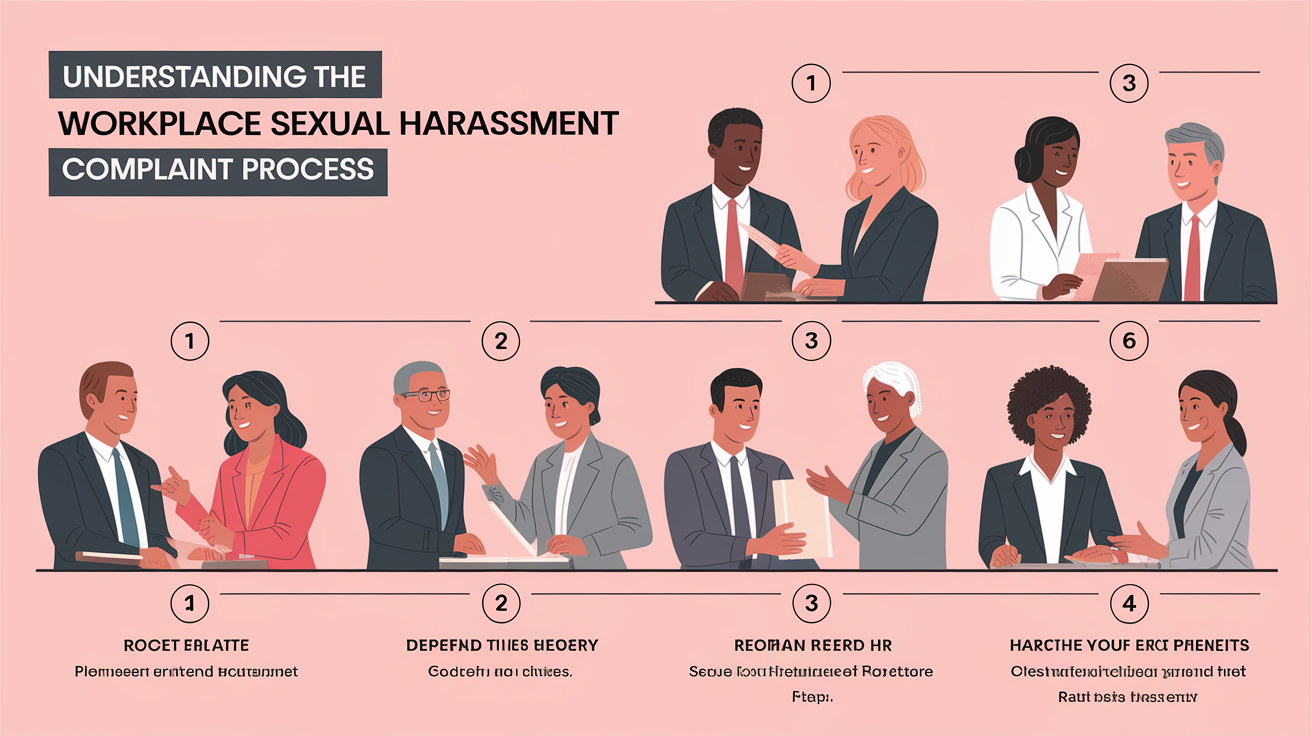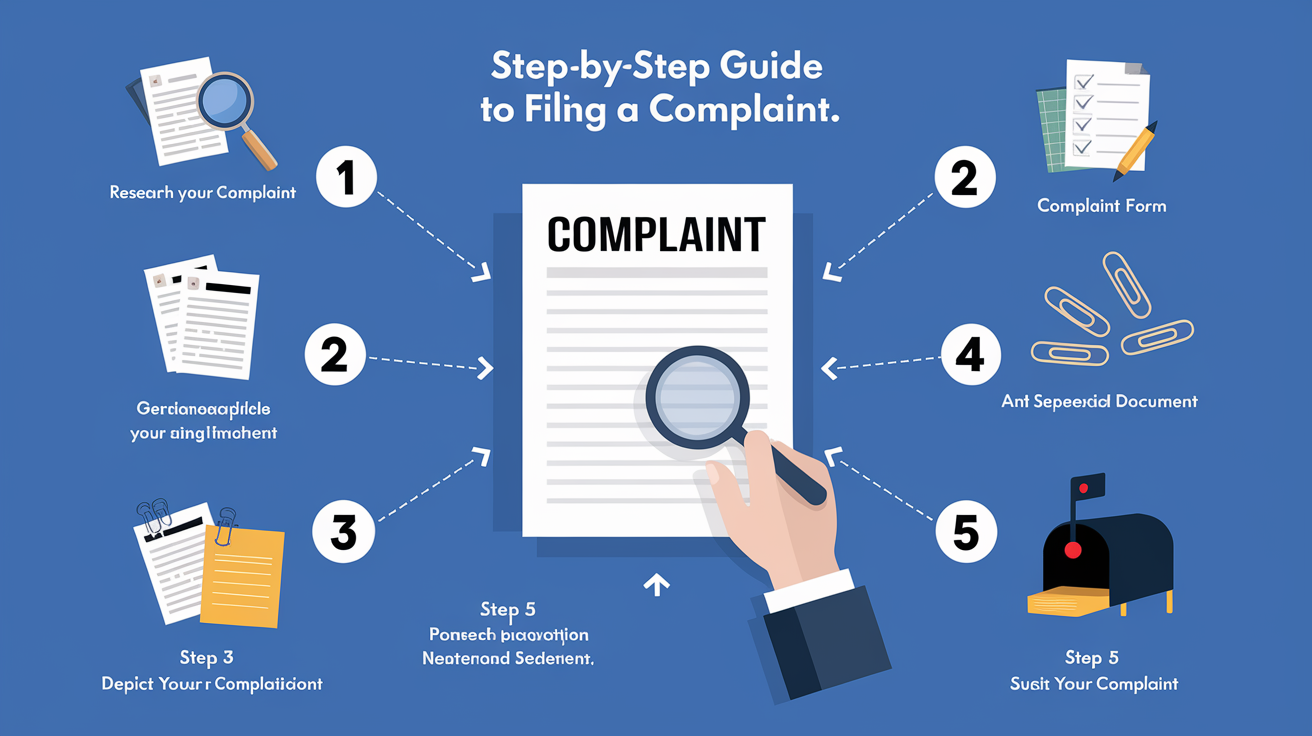Understanding the Workplace Sexual Harassment Complaint Process
Facing sexual harassment at work can feel overwhelming — like standing at the bottom of a mountain with no climbing gear. But here’s the truth: you are not powerless. The law and proper workplace policies can give you the tools you need to climb that mountain, step by step.
The workplace sexual harassment complaint process is designed to provide a structured, fair, and confidential way to address inappropriate conduct. It begins the moment you report an incident of unwelcome sexual behavior — whether it’s explicit comments, unwanted physical contact, or coercive demands, including “quid pro quo” situations.

According to investigation best practices, most policies follow a sequence: the intake of your complaint, a preliminary assessment of severity and credibility, fact-finding during an investigation process, a decision based on the gathered evidence, resolution, and follow-up to prevent recurrence.
Throughout, confidentiality and fairness are critical. These protections are not only best practices but part of complying with laws like Title VII of the Civil Rights Act, which prohibits workplace discrimination and harassment. Your employer has a legal and ethical duty to act on grievances without bias and without retaliation.
Step-by-Step Guide to Filing a Complaint
So, how do you file a sexual harassment complaint at work? Begin by documenting everything. Evidence is the backbone of your complaint.

- Keep a record: Write down dates, times, locations, and specific details of the incidents.
- Save proof: Preserve emails, text messages, or notes that support your account.
- Identify witnesses: Note anyone who saw or heard the behavior in question.
Once you have documentation, follow your workplace’s grievance procedures. Typically, you will contact the HR department or a designated officer. Many organizations require you to submit your complaint in writing. The step-by-step filing resources suggest keeping copies of all your communications for your records.
- Review your employer’s harassment policy.
- Prepare your written complaint and supporting evidence.
- Submit your complaint to the correct internal contact, usually HR or a harassment officer.
- Confirm receipt and ask about the next steps or investigation timeline.
- Consider whether to also report to external agencies like the EEOC, especially if internal processes fail.
If your company lacks a harassment policy, you still have rights under federal and state employment laws. You can contact the EEOC or your state’s fair employment agency directly.
Ensuring Confidentiality and Support
Confidentiality isn’t just a courtesy in harassment complaints — it’s a safeguard. Psychologically, it can be the difference between feeling safe enough to speak and remaining silent out of fear. Legally, it maintains the integrity of the investigation and protects everyone involved from premature judgment.

Your employer should disclose information only to those directly involved in assessing or resolving the case. This means your co-workers or unrelated supervisors should not be given unnecessary details. If you are worried about retaliation, know that retaliation protections are strong under federal law. If someone demotes, isolates, or harasses you for speaking up, that in itself is an unlawful act.
Support systems also matter. These can include access to counseling services, support from employee resource groups, and legal advice. Some workplaces offer anonymous complaint hotlines to encourage more people to come forward without fear.
Company Responsibilities and Timelines
Once your complaint is filed, what should you expect from your employer? First, prompt action. Delays undermine the process and prolong harmful situations. According to investigation guidelines, a timely investigation often takes weeks, not months — though the exact duration depends on complexity.
The company’s obligations include:
- Assigning a neutral, trained investigator
- Interviewing all relevant parties, including witnesses
- Reviewing documentary evidence like emails, HR records, and security footage
- Making findings based on evidence — not assumptions
- Implementing corrective actions, ranging from formal warnings to termination, if harassment is confirmed
Employers must also follow up after resolution to ensure the hostile work environment has ceased and that no retaliation occurs. Inaction or half-measures can result in legal liability under employment law.
Benefits of an Effective Complaint Process
Why do all these steps matter? Because an effective complaint process protects more than just legal interests — it preserves dignity, safety, and workplace culture.
When complaints are handled fairly and efficiently:
- Victims feel heard and validated.
- Harassment is more likely to stop and not recur.
- Employees learn that misconduct has consequences.
- Organizations reduce their legal risk and demonstrate ethical leadership.
Statistics from employment law studies show that workplaces with strong harassment policies and swift responses report up to 70% fewer repeat incidents. That’s not just a number — it’s proof that taking this seriously changes lives and strengthens work environments.
In the end, knowing how to navigate the workplace sexual harassment complaint process is like having a map through unfamiliar terrain. You may still face challenges, but with knowledge, preparation, and the right support, you can move toward resolution and reclaim your sense of safety and respect at work.















